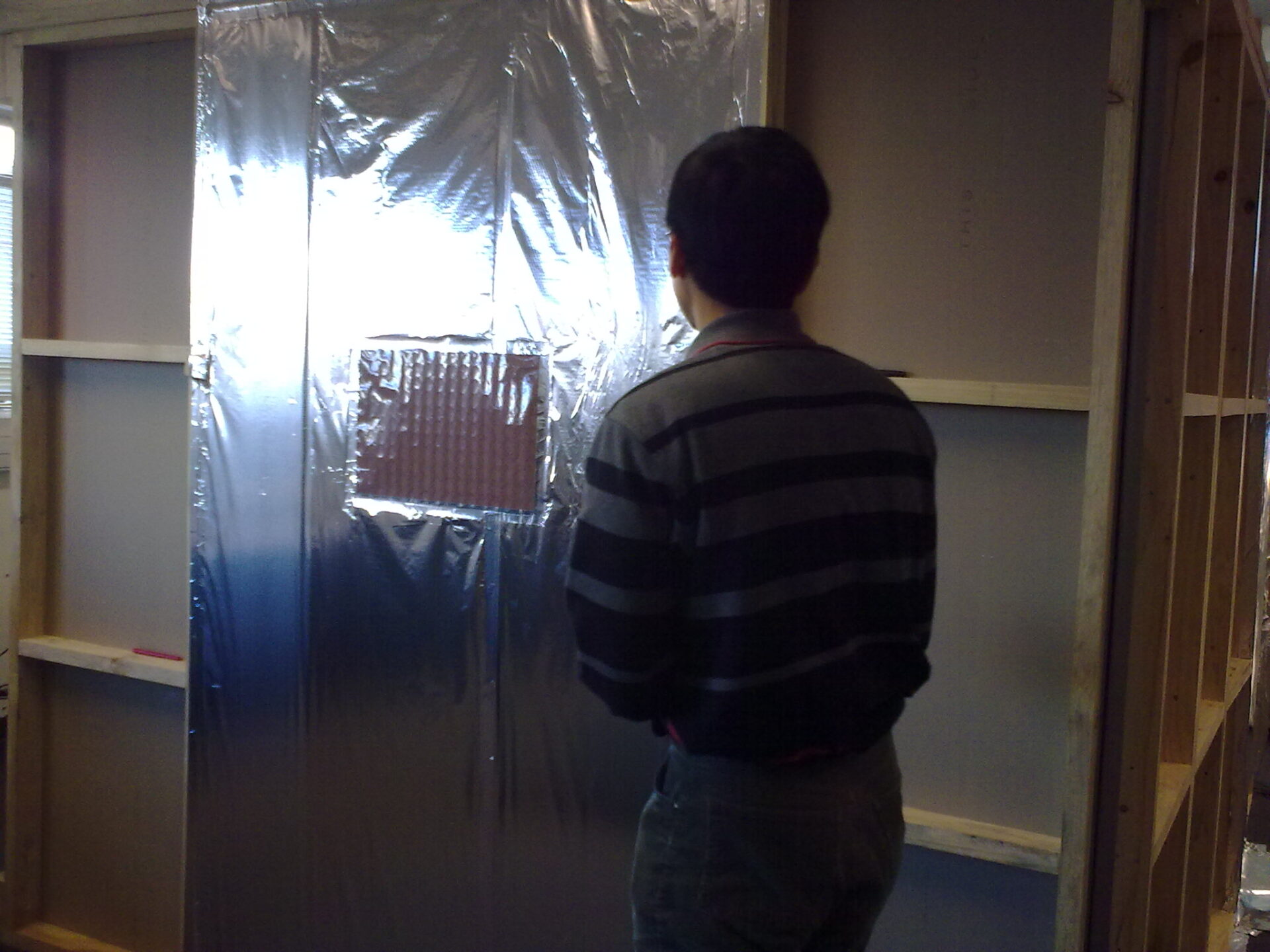What can we do about it?
When planning WiFi networks it is essential to place the access points and choose their channels carefully. Although it seems strange, interference and bandwidth sharing can be reduced by lowering the transmit power at the access points (view example). Alternatively using WiFi blocking walls in buildings can reduce interference. When unwanted signals are stopped, the interference goes down and a few users inside a screened room can share the entire WiFi bandwidth to themselves (view example). Similarly, people on the other side of the screen can do the same. Using highly channel screening metal sheets in the walls would provide very good signal blocking between rooms. Building regulations and good practice require that metal foils are included in external and some internal walls for thermal insulation and to prevent moisture penetration. These can reduce both interference as well as wanted signals for mobile devices etc.

